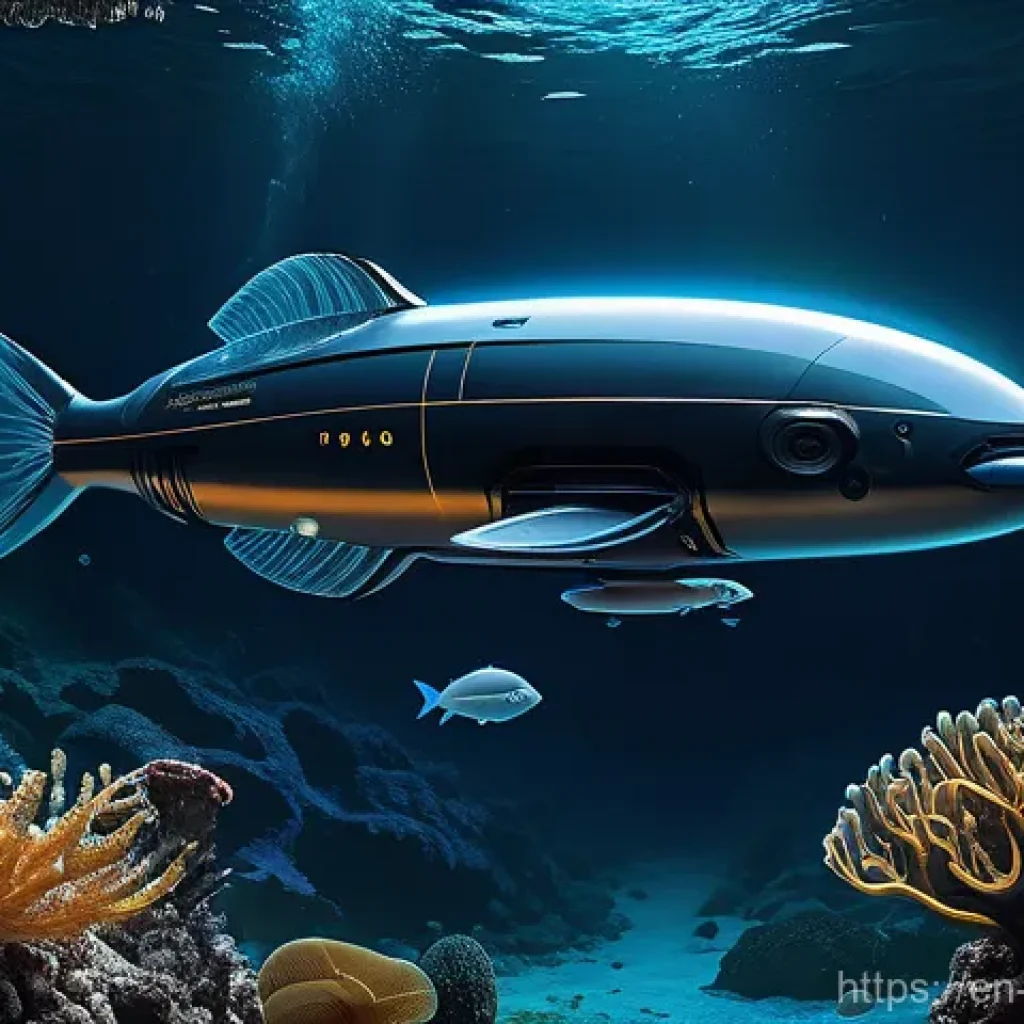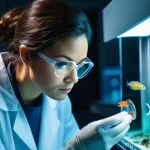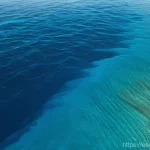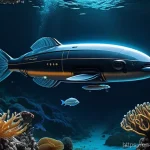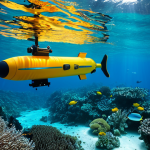Oh, the ocean! It’s this vast, mysterious, and incredibly vital part of our planet, constantly calling us to explore its depths and understand its intricate workings.
Honestly, sometimes I just stare at a picture of the deep blue and feel this overwhelming mix of awe and urgency. Especially these days, with our planet’s climate in such a delicate balance, the need to truly *understand* our oceans—and how to study them effectively—has never felt more critical.
From those elusive deep-sea creatures we’re just beginning to glimpse with cutting-edge robotics and advanced imaging to the urgent need to monitor everything from rising sea levels to ocean acidification, every piece of research design matters.
We’re seeing incredible advancements in marine technology, like autonomous underwater vehicles (AUVs) and smart buoys, that are completely revolutionizing how we collect data and track marine life, making once inaccessible areas now within reach.
Plus, the push for interdisciplinary approaches, bringing together biologists, chemists, and even AI specialists, is really opening up new avenues for tackling complex challenges like marine heatwaves and biodiversity loss.
It’s a truly exciting, and sometimes daunting, time to be talking about oceanography, but the potential for groundbreaking discoveries that can help us protect our blue planet is absolutely immense.
Let’s dive deeper below!
Wow, the ocean truly is a marvel, isn’t it? That feeling you get when you glimpse a documentary or read a report about some new deep-sea discovery – it’s pure magic, mixed with a little bit of anxiety about its future.
For years, I’ve been utterly fascinated by how scientists are unraveling its secrets, especially now, when every bit of knowledge we gain feels like a lifeline for our blue planet.
The sheer ingenuity in the tools and methods they’re developing is astounding, making once-impossible missions not just possible, but routine. It’s a field buzzing with innovation, and honestly, it makes me feel so hopeful for what we can still achieve.
Unlocking the Deep: Adventures with Autonomous Tech
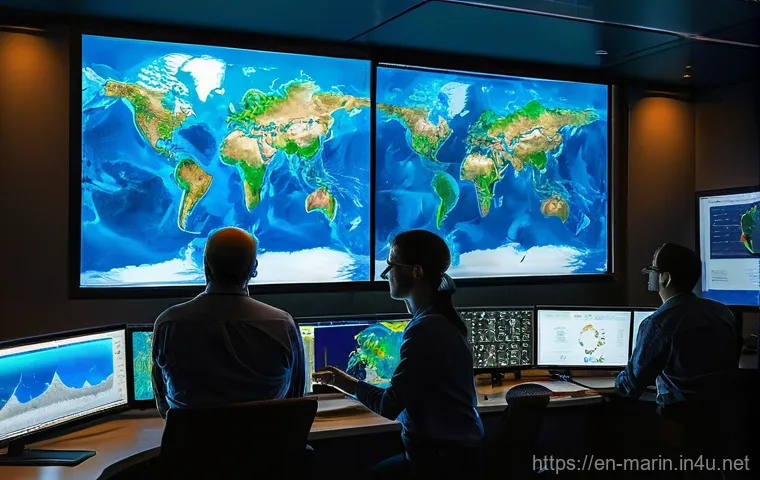
You know, for the longest time, the deep ocean felt like this impenetrable fortress, right? Human divers can only go so far, and even tethered ROVs (Remotely Operated Vehicles) have their limits. But then, enter the world of Autonomous Underwater Vehicles, or AUVs, and suddenly, the game changed entirely. It’s like sending a fleet of miniature, super-smart submarines to do our bidding, without needing a constant human hand guiding them. I’ve seen footage of these things navigating complex underwater terrains, and it’s wild to think they’re pre-programmed, carrying out intricate missions all on their own. They can dive to incredible depths, places where the pressure would crush anything less specialized, and they stay down there for weeks, sometimes even months, patiently collecting data. This autonomy allows them to map vast stretches of the seafloor with unprecedented detail, far more efficiently and safely than any other method we’ve had. Just imagine, detailed 3D maps of underwater mountains and trenches, revealing geological processes that were once pure speculation. They’re essentially computer-controlled taxis for a whole suite of sensors, allowing researchers to get a truly comprehensive and accurate understanding of the oceans. From tracking temperature and salinity changes to monitoring marine ecosystems and even subsurface volcanic activity, AUVs are providing crucial insights into how climate change impacts our oceans. It truly feels like we’re finally getting a peek behind the curtain of Earth’s last great frontier.
The Untethered Explorers: AUVs vs. ROVs
When we talk about underwater robotics, people often confuse AUVs with ROVs, but there’s a crucial difference that makes AUVs revolutionary for broad exploration. Think of it this way: an ROV is like a sophisticated, remote-controlled drone for underwater, always connected to a surface ship by a cable, meaning a human is constantly at the helm, directing its every move. They’re fantastic for detailed inspections, like checking on an offshore wind turbine or collecting specific samples. But AUVs? They’re the true independent spirits of the deep. Untethered and self-guided, they embark on pre-programmed missions, navigating autonomously through complex environments using advanced systems for navigation, communication, and data collection. This freedom allows them to cover enormous distances and operate in areas inaccessible to ROVs or human divers, reducing both the risk to humans and the cost of operations. They can dive much deeper and map much broader ranges of oceanic terrain, providing consistent, high-quality data for scientific, economic, and even defense uses. It’s truly a game-changer for expanding the reach of our oceanographic research.
Gliding Through the Unknown: Specialized AUVs
It’s not just one-size-fits-all with AUVs, which is something I find incredibly cool. There are actually different types, each uniquely suited for specific tasks. For example, propeller-driven AUVs are often favored for detailed near-bottom surveys, where they can “mow the lawn” and image the seafloor while simultaneously measuring water quality. Then you have gliders, which are a fascinating subset of AUVs. These don’t rely on propellers for continuous thrust. Instead, they cleverly use changes in their buoyancy, coupled with fixed wings, to generate lift and move laterally through the water. Gliders are particularly effective offshore, where they can investigate ocean currents, water-column productivity, or even the intricate structure of water masses over long durations and vast areas. This specialization means researchers can select the perfect robotic tool for their specific scientific question, whether it’s understanding microscopic plankton distributions or mapping colossal submarine canyons that plunge thousands of meters deep. The versatility these vehicles offer means we can tackle a wider array of ocean mysteries than ever before, truly expanding our understanding of marine life and ecosystems.
The Symphony of Sensors: Decoding Ocean’s Secrets
Modern oceanography isn’t just about sending robots into the deep; it’s about what those robots—and countless other platforms—can *feel* and *measure*. We’re talking about an incredible array of advanced sensors that are like the ocean’s own nervous system, constantly gathering vital information from every corner of the marine environment. It’s a vast network, from buoys bobbing on the surface to sophisticated instruments nestled on the seafloor, all designed to capture the ocean’s pulse in real-time. I remember learning about how difficult it was to get consistent data even a few decades ago, but now, with these “smart monitoring systems,” we’re getting an unprecedented look at ocean health. These sensors measure everything from temperature, salinity, and pressure to oxygen levels, turbidity, and even the subtle chemical signatures that tell us about nutrient cycles or pollution. The sheer volume and resolution of this data are mind-boggling, allowing scientists to identify patterns and anomalies that were previously invisible to us. It’s like going from a blurry black-and-white photo to a high-definition, full-color video of the ocean’s inner workings. The insights derived from these continuous streams of data are absolutely critical for understanding complex oceanographic processes, improving climate models, and forecasting everything from marine heatwaves to the spread of pollutants.
Buoys and Floats: The Sentinels of the Seas
When you picture ocean research, you might not immediately think of buoys, but trust me, these seemingly simple devices are the unsung heroes of real-time ocean monitoring. Smart buoys, equipped with advanced sensors, act as vigilant sentinels, continuously collecting data on water temperature, salinity, wave height, and wind speed right from the surface. Then there’s the truly revolutionary ARGO float system – a global array comprising thousands of autonomous devices that drift with ocean currents. These floats periodically dive to depths of 2,000 meters, gathering crucial data on ocean conditions every 10 days before surfacing to transmit their findings via satellite. This expansive network provides invaluable vertical profiles of ocean conditions, which are critical for refining extreme weather forecasts and understanding large-scale ocean dynamics. For anyone passionate about ocean health, seeing these systems in action, quietly gathering the puzzle pieces that help us understand our planet, is genuinely inspiring. They’re constantly improving, too, with low-cost, lightweight data buoy solutions making ocean data more accessible than ever, even for smaller organizations.
eDNA and Acoustic Magic: Listening to Life
Beyond the physical and chemical measurements, there’s an incredible shift happening in how we “see” and “hear” marine life, especially those elusive deep-sea creatures. Environmental DNA, or eDNA, is a cutting-edge tool that’s honestly a bit like magic. Imagine being able to detect the presence of species simply by analyzing the genetic material they’ve shed into the water – a tiny piece of skin, a fecal sample, or even mucus. This non-invasive method is revolutionizing how we study marine biodiversity, allowing us to identify species without ever physically encountering them, which is huge for understanding fragile ecosystems. And then there’s acoustics. Sound travels incredibly well underwater, far better than light, so scientists are deploying advanced hydrophones and acoustic sensors to listen to the ocean’s symphony. This allows them to track marine mammals, monitor fish populations, and even detect the subtle sounds of geological activity. I find it fascinating that we’re essentially using the ocean’s own properties to gain insights, painting a richer picture of the life within it. These innovations are truly allowing us to expand our understanding in ways that were unimaginable just a few years ago.
The Human Element: Interdisciplinary Harmony in Science
It’s easy to get lost in the gadgets and gizmos, but what truly makes modern oceanography shine is the people behind it and how they’re coming together. No single scientist or field can tackle the immense challenges our oceans face alone. What I’ve seen firsthand, and what fills me with so much hope, is the growing push for truly interdisciplinary approaches. We’re talking about biologists collaborating with chemists, ocean engineers working alongside AI specialists, and even social scientists engaging with policymakers. This isn’t just about sharing notes; it’s about integrating knowledge and methods from wildly different disciplines to create a comprehensive understanding and generate innovative solutions. The problems our oceans are grappling with – climate change, pollution, biodiversity loss – are complex and interconnected, so our solutions need to be too. This collaborative spirit is leading to breakthroughs that would simply not be possible if everyone stayed in their own academic silos. It means that the next generation of ocean explorers aren’t just experts in one narrow field, but curious minds capable of bridging gaps and fostering true scientific synergy. Honestly, it’s inspiring to witness this collective intelligence at work, all focused on one common, vital goal.
Breaking Down Silos: A Holistic Approach
For too long, science, including oceanography, has often operated in separate, specialized compartments. Biologists studied marine life, chemists focused on ocean composition, and physicists looked at currents and temperatures. But the ocean doesn’t care about our academic boundaries! Everything is interconnected. The health of a coral reef, for example, isn’t just about the biology of the polyps; it’s about the water chemistry, the prevailing currents, the impacts of local human activity, and the overarching effects of climate change. This is why a holistic, interdisciplinary approach is absolutely essential. We’re seeing more and more projects that bring together diverse expertise right from the start of the research design, allowing for a much richer and more nuanced understanding of complex systems. For instance, studying marine heatwaves requires combining ocean temperature data with biological responses and even atmospheric patterns. This integrative thinking helps us to develop robust models and predictions for how marine ecosystems will respond to global environmental change. It’s about recognizing that the Earth system is composed of dynamic physical, chemical, and biological components, and that their interactions influence everything from marine organisms to the broader climate.
From Data to Policy: Real-World Impact
The beauty of this interdisciplinary collaboration isn’t just confined to academic papers; it’s about making a tangible difference in the real world. The insights generated from integrated research are directly influencing conservation strategies and policy decisions. When scientists from various fields pool their data and expertise, they can provide policymakers with a much clearer, more robust picture of what’s happening in our oceans and what actions are most effective. For instance, data from autonomous systems about ocean acidification, combined with biological studies on shell-forming organisms, can directly inform regulations on carbon emissions or the establishment of marine protected areas. Organizations like Ocean Conservancy and Marine Conservation Institute are actively using science-based solutions and research findings to advocate for sustainable fishing practices, reduce marine debris, and protect vulnerable ecosystems. The goal is to move beyond simply understanding the problems to actively developing transformative solutions for sustainable development. I’ve seen how powerful it can be when science isn’t just “done” but actively translated into actionable steps that can protect marine life and habitats for future generations.
Navigating the Data Deluge: Turning Information into Action
Let’s be real, collecting data is only half the battle, right? With all these incredible new technologies — AUVs, smart buoys, advanced sensors, and satellite imagery — we’re generating an absolute avalanche of information. It’s truly a “data deluge,” and honestly, sometimes it feels like trying to drink from a firehose. The real challenge, and where some of the most exciting innovations are happening, is in turning all that raw data into meaningful insights and actionable steps. This isn’t just about storing terabytes of information; it’s about processing, analyzing, and interpreting it in ways that help us understand our oceans better and protect them more effectively. I’ve talked to researchers who spend countless hours developing algorithms and models to make sense of these complex datasets. It’s a huge undertaking, but it’s absolutely critical because if we can’t understand the data, we can’t use it to inform conservation efforts, predict environmental changes, or even make daily decisions that impact marine ecosystems. It’s an evolving field where the lines between oceanography, computer science, and even artificial intelligence are blurring, and it’s exhilarating to see the possibilities unfold.
AI and Machine Learning: The New Oceanographers
This is where Artificial Intelligence (AI) and machine learning truly shine as the new frontiers in ocean research. Imagine having algorithms that can process vast amounts of oceanographic data, identifying subtle patterns and anomalies that a human might completely miss. We’re talking about AI-powered systems that can identify and monitor multiple marine species simultaneously, tracking their movements and behaviors without disturbing them. This is a huge leap forward from manual observations, which can be time-consuming and often limited in scope. AI also plays a critical role in predictive modeling, helping scientists forecast ocean currents, temperature changes, and even the potential hazards for deep-sea missions. It’s also revolutionizing image and signal processing, making sense of the high-definition footage from ROVs and AUVs, and enhancing the data collected by sonar systems. For me, the idea of AI working alongside human scientists, augmenting our capabilities and helping us see the ocean with fresh eyes, is truly inspiring. It’s about empowering researchers to make better, faster decisions and unlock deeper secrets than ever before.
The Roadblocks: Data Standardization and Accessibility
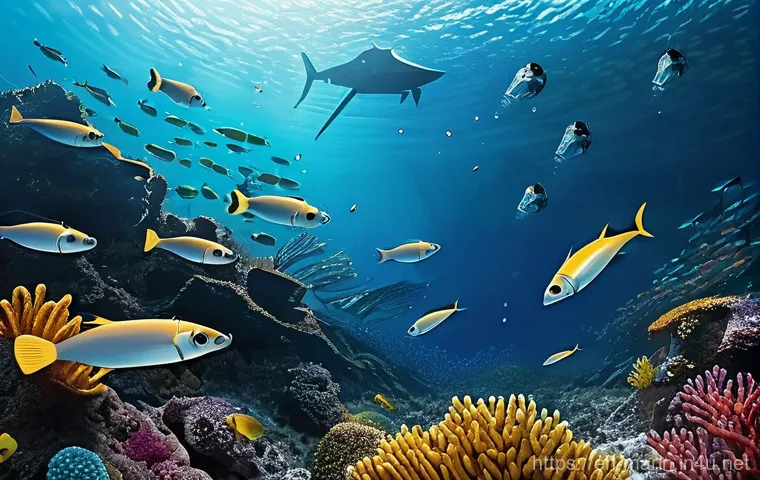
Despite the incredible advancements, the path to a fully data-driven oceanography isn’t without its bumps. One of the persistent challenges I’ve encountered in my conversations with experts is the issue of data standardization and accessibility. Different research groups, institutions, and even types of sensors often collect data using varying protocols and formats. This inconsistency can create significant “interoperability challenges,” making it difficult to combine and compare datasets effectively. It’s like trying to put together a puzzle where all the pieces are from different sets! Then there’s the accessibility factor. While many government agencies and research initiatives are working to make ocean data more openly available, the sheer complexity and volume can still be daunting. We also have to consider the high costs associated with processing and archiving this data, which can sometimes limit the expansion of oceanic knowledge, especially for smaller organizations. However, initiatives like the World Climate Research Programme and the Global Ocean Observing System (GOOS) are actively working to improve data sharing and close these knowledge gaps, promoting better collaboration and ensuring this valuable information can be used to its full potential.
Safeguarding Our Blue Planet: Research Driving Conservation
At the heart of all this incredible research and technological advancement lies a profound purpose: protecting our oceans. It’s not just about curiosity or scientific discovery; it’s about understanding the threats and finding solutions to ensure the health of marine ecosystems for generations to come. Honestly, when I look at the news, it’s easy to feel overwhelmed by the challenges—pollution, overfishing, climate change. But then I see the dedicated work happening, fueled by cutting-edge research, and I feel a surge of hope. Oceanography is no longer just about studying; it’s about actively contributing to conservation. Every piece of data collected, every new species discovered, every ecosystem mapped, builds our collective knowledge base, providing the critical foundation for effective conservation and management policies. It’s a powerful feedback loop where science informs action, and action, in turn, highlights new areas for scientific inquiry. The focus is shifting from simply observing decline to actively devising and implementing strategies to reverse it. It’s a mission I deeply believe in, and it’s inspiring to witness the passion and ingenuity driving these efforts.
Targeting Threats: From Microplastics to Marine Mammals
The beauty of modern ocean research is its ability to pinpoint and address specific threats with incredible precision. Take plastic pollution, for example. We’re now seeing innovations like advanced mesh systems equipped with AI-powered sensors that can identify and capture microplastics as small as 100 micrometers, allowing marine life to pass through safely. It’s a tangible step towards tackling a pervasive problem. Then there’s the ongoing battle against overfishing. Research on fish abundance, growth rates, and natural mortality, often aided by sophisticated data collection methods, directly informs stock assessments to establish sustainable quotas. And for marine mammals, satellite technology has revolutionized our ability to track and protect them, providing unprecedented insights into migration patterns, feeding grounds, and breeding areas. I find it incredibly moving to see how these diverse research efforts translate into direct conservation actions, from creating detailed maps of marine protected areas to developing innovative solutions like lights on fishing nets that reduce sea turtle bycatch. It’s a testament to how science is literally saving lives in the ocean.
Building a Resilient Future: Climate and Ecosystem Health
Beyond individual threats, a significant focus of current research is on understanding and mitigating the broader impacts of climate change on ocean health. This includes crucial studies on ocean acidification, rising sea levels, and marine heatwaves. Scientists are using advanced models and observational data to quantify and predict these impacts on marine ecosystem services. The aim isn’t just to document the changes but to build resilience within marine systems. For instance, research into deep-sea organisms that thrive without sunlight is inspiring breakthroughs in biotechnology and even medicine. Understanding how different ecosystems, like coral reefs or kelp forests, respond to stress helps conservationists design more effective protection strategies. It’s also leading to the development of climate solutions that leverage the ocean itself, such as evaluating carbon dioxide removal (CDR) options. The UN Decade of Ocean Science for Sustainable Development, running from 2021-2030, is a global initiative emphasizing this exact point: global cooperation, interdisciplinary research, and intersectoral collaboration are essential to support the restoration and maintenance of ocean ecosystems. It’s a massive undertaking, but the scientific community’s dedication to creating a more sustainable future for our oceans is palpable.
| Research Area | Key Technologies/Methods | Conservation Impact |
|---|---|---|
| Deep-Sea Exploration | Autonomous Underwater Vehicles (AUVs), Remotely Operated Vehicles (ROVs), Advanced Imaging, Sonar Mapping | Discovery of new species, mapping critical habitats, understanding deep-sea ecosystems vulnerable to human activity. |
| Ocean Health Monitoring | Smart Buoys, ARGO Floats, Chemical Sensors, Satellite Remote Sensing | Tracking ocean acidification, sea surface temperature, currents; informing climate change mitigation strategies and pollution control. |
| Marine Biodiversity | Environmental DNA (eDNA), Acoustic Sensors, Underwater Cameras, Genomic Sequencing | Non-invasive species detection, tracking migration patterns, assessing population health, identifying vulnerable species. |
| Ecosystem Resilience | Interdisciplinary Modeling, Long-term Observational Data, AI for Predictive Analytics | Predicting impacts of climate change, developing adaptation strategies for vulnerable ecosystems (e.g., coral reefs), guiding marine protected area design. |
Future Horizons: What’s Next for Ocean Exploration?
As much as we’ve achieved, it truly feels like we’re just scratching the surface of what’s possible in ocean exploration. The future isn’t just about incrementally improving existing tools; it’s about revolutionary leaps that will redefine our relationship with the marine world. I genuinely get excited thinking about the next generation of technologies that are already on the horizon, promising to make our understanding even more profound and our conservation efforts more effective. We’re moving towards an era where the lines between human and machine intervention in research will become increasingly blurred, with robots becoming even more intelligent and autonomous. This evolution isn’t just about reaching deeper or collecting more data; it’s about creating a more comprehensive, real-time, and accessible picture of our oceans than we’ve ever had before. The scale of the mysteries still hidden beneath the waves is immense—more than 80% of the ocean remains unexplored! But with the pace of innovation, I’m confident we’re on the cusp of truly unlocking those secrets. It’s a thrilling prospect for anyone who cares deeply about our planet’s future.
Hyper-Intelligent Robotics and Swarm Exploration
If you thought current AUVs were smart, just wait! The future promises hyper-intelligent robotics, driven by even more advanced AI and machine learning. Imagine robots trained to identify organisms and track them without disturbing their natural behavior, operating for months or even years on end, recharging underwater, and making complex decisions autonomously. We’re also seeing exciting developments in “swarm robotics,” where multiple robots are deployed from a single “mothership” and work together, coordinating underwater missions. This kind of collaborative exploration could revolutionize how we monitor vast features of climate change, like the melting of marine glaciers, or map entire ocean basins with unprecedented speed and efficiency. The ability of these untethered, AI-powered submersibles to explore large stretches of the seafloor minimizes risks to human lives while accelerating mapping efforts dramatically. It’s truly a vision of a highly connected, autonomous research network that will allow us to gather insights on a scale that feels almost futuristic, yet it’s rapidly becoming our reality.
Real-Time Global Ocean Observation and Digital Twins
Another area that truly captivates me is the push towards real-time global ocean observation and the concept of “digital twins” of marine environments. Imagine being able to access live data streams from thousands of sensors, buoys, and autonomous vehicles around the world, all integrated into a comprehensive, dynamic model of the ocean. This isn’t just about looking at past data; it’s about having a constantly updated, living picture of ocean conditions. Partnerships, like the one between NOAA and Fugro, are already focusing on advancing remote mission control, developing cloud-based workflows, and improving real-time data delivery through high-bandwidth communications. This will enable scientists to control underwater robots from distant locations in real-time, making ocean exploration more accessible and cost-effective than ever before. The ultimate goal is to create highly accurate digital representations of entire ocean regions, allowing researchers to simulate scenarios, predict changes, and test conservation strategies virtually before implementing them in the real world. It’s about moving from sporadic snapshots to a continuous, high-definition movie of our oceans, empowering us to respond much more effectively to environmental challenges. This level of insight will be invaluable for everything from managing fisheries to responding to unforeseen marine events.
Wrapping Up Our Deep Dive
Wow, what an incredible journey we’ve been on, diving deep into the world of modern oceanography! It’s truly mind-blowing to see how far we’ve come, thanks to the sheer ingenuity and passion of scientists and engineers. From tiny, autonomous explorers charting unknown territories to global networks of sensors listening to the ocean’s heartbeat, every step forward feels like a massive win for our blue planet. Honestly, it makes me feel so optimistic about our ability to tackle the big challenges ahead. This isn’t just about scientific discovery; it’s about safeguarding the very essence of life on Earth, and I’m genuinely thrilled to be able to share these fascinating insights with you. The ocean’s future is in our hands, and knowing that so many brilliant minds are dedicated to its protection fills me with immense hope.
Handy Tips for the Ocean Enthusiast
Here are a few quick tips and insights I’ve picked up, perfect for anyone who, like me, is absolutely captivated by our oceans:
1. Support Ocean-Friendly Brands: When you’re shopping, keep an eye out for brands committed to sustainable practices and those that donate a portion of their profits to ocean conservation. Every little bit helps make a difference!
2. Reduce Your Plastic Footprint: This one’s a classic, but it bears repeating! Opt for reusable water bottles, coffee cups, and shopping bags. Even cutting down on single-use plastics in your daily life can significantly impact marine ecosystems.
3. Stay Informed and Share: The more you learn about ocean science and conservation, the better equipped you are to advocate for it. Follow reputable organizations, read up on new discoveries, and share what you learn with friends and family!
4. Volunteer Locally or Virtually: Many coastal communities have beach clean-ups or marine life monitoring programs. If you’re not near the coast, look for virtual volunteering opportunities or participate in citizen science projects that contribute to ocean data collection.
5. Visit an Aquarium or Marine Center: Seeing marine life up close is an incredible way to foster appreciation and understanding. Many of these centers also fund crucial research and rehabilitation efforts, directly contributing to conservation.
Key Takeaways
Reflecting on our exploration of modern oceanography, it’s clear that we’re living through an incredibly dynamic period of discovery and conservation. What stands out most to me is the undeniable power of technological innovation – from AUVs mapping the abyssal plains to AI algorithms deciphering complex datasets, these tools are pushing the boundaries of what’s possible, allowing us to see, hear, and understand the ocean in unprecedented detail. Crucially, this isn’t just about cool gadgets; it’s about the brilliant minds coming together in interdisciplinary harmony, recognizing that the ocean’s challenges require a truly holistic approach. Biologists, engineers, chemists, and even social scientists are collaborating to turn raw data into actionable insights, influencing policies, and driving real-world conservation efforts. Our collective mission is to move beyond mere observation and actively build a more resilient future for our blue planet. It’s a huge undertaking, but the passion and dedication within the scientific community, coupled with these groundbreaking advancements, truly give me hope that we can safeguard our oceans for generations to come.
Frequently Asked Questions (FAQ) 📖
Q: What are some of the most exciting new technologies revolutionizing how we study the ocean?
A: Oh, this is one of my absolute favorite topics! Honestly, the advancements in marine technology lately are nothing short of mind-blowing. When I started following oceanography, much of it relied on more traditional methods, but now?
We’re talking about a whole new era. For me, the game-changers are definitely Autonomous Underwater Vehicles (AUVs) and Remotely Operated Vehicles (ROVs).
Think about it: these incredible robotic subs can dive into places humans simply can’t, enduring extreme pressures and cold for hours, even days, collecting data on temperature, salinity, currents, and even mapping the seafloor with unbelievable precision.
I’ve seen firsthand how an AUV can quietly track marine life without disturbing their natural behavior, giving us unprecedented insights into their movements and habitats.
Then there are smart buoys and sensor networks—these aren’t just your grandfather’s weather buoys anymore! They’re sophisticated data hubs, often solar-powered, constantly beaming back real-time information on everything from ocean acidification levels to marine heatwaves.
And let’s not forget satellite imagery and advanced acoustics! Satellites like those from NASA’s Earth Observatory provide a vast overview of ocean health, tracking algal blooms or sea ice melt, while advanced sonar systems help us peek into the deepest trenches and discover entirely new species.
It’s like we’ve gone from squinting through a peephole to having a panoramic view of the deep blue, and trust me, the discoveries are just getting started!
Q: Why is understanding the ocean more critical now than ever before?
A: That’s a question that keeps me up at night, honestly, but also fuels my passion! When I look at the state of our planet, the ocean isn’t just a big blue expanse; it’s the beating heart of Earth, and it’s under immense pressure.
From my perspective, the urgency comes down to a few major factors. First off, climate change. The ocean absorbs a staggering amount of heat and carbon dioxide, which is a double-edged sword.
While it’s buffered some of the worst impacts on land, it’s also suffering: marine heatwaves are becoming more frequent and intense, coral reefs are bleaching at an alarming rate, and ocean acidification is threatening shell-forming organisms from tiny plankton to oysters.
These aren’t just abstract scientific concepts; these are direct threats to global food security and entire ecosystems! Secondly, biodiversity loss is a huge concern.
We’re losing species before we even discover them, and human activities like overfishing and pollution are accelerating this. Understanding ocean processes now helps us predict future changes, develop conservation strategies, and mitigate risks to coastal communities.
It’s not just about saving pretty fish; it’s about maintaining the intricate balance that supports all life on Earth, including our own. So, yeah, it feels incredibly critical because what we learn now, and what actions we take, will literally shape the future of our planet.
Q: How can an everyday person contribute to ocean research or conservation, even without being a marine scientist?
A: This is a fantastic question, and one I get a lot! You absolutely don’t need a PhD or a deep-sea submersible to make a difference; anyone with a passion for the ocean can contribute.
One of the easiest and most impactful ways I’ve personally engaged is through citizen science projects. Organizations like the Monterey Bay Aquarium Research Institute (MBARI) or various local conservation groups often have programs where you can help collect data, monitor beaches, or identify marine life from photos.
Even just reporting unusual sightings of marine animals or pollution you see at the beach can be incredibly valuable to researchers! Another powerful route is supporting reputable conservation organizations.
A small donation, or even just spreading awareness about their work, can fund critical research, policy advocacy, and on-the-ground conservation efforts.
I always recommend doing a little digging to find groups whose missions truly resonate with you. And honestly, simply making conscious choices in your daily life, like reducing your plastic consumption, choosing sustainably sourced seafood, and being mindful of your carbon footprint, all collectively make a huge ripple effect.
Every little bit truly helps, and seeing the collective impact of individuals choosing to care is, for me, one of the most hopeful aspects of this whole challenge.
